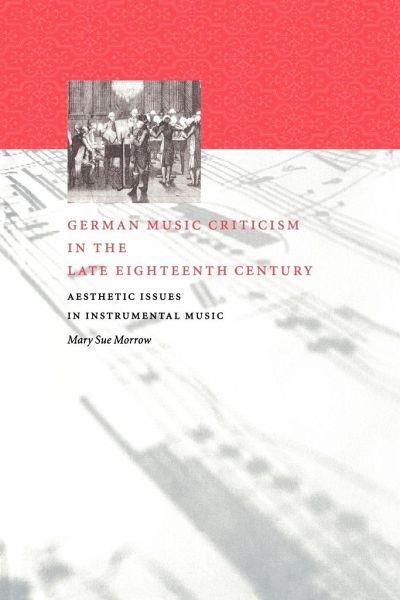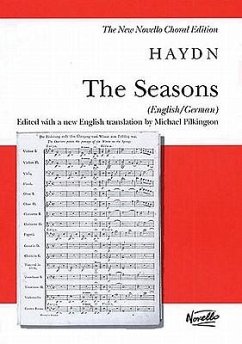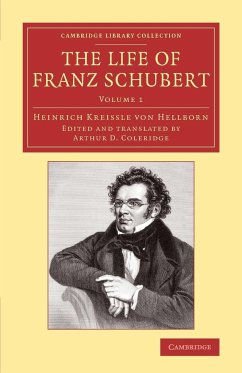
German Music Criticism in the Late Eighteenth Century
Aesthetic Issues in Instrumental Music

PAYBACK Punkte
21 °P sammeln!
Derives a practical aesthetic for German instrumental music during the late eighteenth century, from reviews of printed instrumental works.Music aesthetics in late eighteenth-century Germany has always been problematic because there was no aesthetic theory to evaluate the enormous amount of high-quality instrumental music produced by composers like Haydn and Mozart. This book derives a practical aesthetic for German instrumental music during the late eighteenth century from a previously neglected source, reviews of printed instrumental works. At a time when the theory of mimesis dominated aest...
Derives a practical aesthetic for German instrumental music during the late eighteenth century, from reviews of printed instrumental works.
Music aesthetics in late eighteenth-century Germany has always been problematic because there was no aesthetic theory to evaluate the enormous amount of high-quality instrumental music produced by composers like Haydn and Mozart. This book derives a practical aesthetic for German instrumental music during the late eighteenth century from a previously neglected source, reviews of printed instrumental works. At a time when the theory of mimesis dominated aesthetic thought, leaving sonatas and symphonies at the very bottom of the aesthetic hierarchy, a group of reviewers were quietly setting about the task of evaluating instrumental music on its own terms. The reviews document an intersection with trends in literature and philosophy, and reveal interest in criteria like genius, the expressive power of music, and the necessity of unity, several decades earlier than has previously been supposed.
Review quote:
'This beautifully produced book contains an introduction and eleven essays on musical life in eighteenth-century Vienna, that extraordinary era in which Mozart, Haydn and Beethoven flourished - The collection is a wonderful example of how applied scholarship can deepen our appreciation of great music.' Contemporary Review
'The book's usefulness is enhanced by music examples, a full bibliography and index.' Peter Branscombe, Times Literary Supplement
Table of contents:
Acknowledgements; Author's note; Introduction: terms of discourse; 1. What does instrumental music mean?; 2. Answering with a unified voice; 3. Answering with a German voice; 4. Answering with aesthetic criteria; 5. The importance of being correct; 6. The reign of genius; 7. A call to order; 8. Epilogue: segue to the nineteenth century; Notes; Bibliography; Index.
Music aesthetics in late eighteenth-century Germany has always been problematic because there was no aesthetic theory to evaluate the enormous amount of high-quality instrumental music produced by composers like Haydn and Mozart. This book derives a practical aesthetic for German instrumental music during the late eighteenth century from a previously neglected source, reviews of printed instrumental works. At a time when the theory of mimesis dominated aesthetic thought, leaving sonatas and symphonies at the very bottom of the aesthetic hierarchy, a group of reviewers were quietly setting about the task of evaluating instrumental music on its own terms. The reviews document an intersection with trends in literature and philosophy, and reveal interest in criteria like genius, the expressive power of music, and the necessity of unity, several decades earlier than has previously been supposed.
Review quote:
'This beautifully produced book contains an introduction and eleven essays on musical life in eighteenth-century Vienna, that extraordinary era in which Mozart, Haydn and Beethoven flourished - The collection is a wonderful example of how applied scholarship can deepen our appreciation of great music.' Contemporary Review
'The book's usefulness is enhanced by music examples, a full bibliography and index.' Peter Branscombe, Times Literary Supplement
Table of contents:
Acknowledgements; Author's note; Introduction: terms of discourse; 1. What does instrumental music mean?; 2. Answering with a unified voice; 3. Answering with a German voice; 4. Answering with aesthetic criteria; 5. The importance of being correct; 6. The reign of genius; 7. A call to order; 8. Epilogue: segue to the nineteenth century; Notes; Bibliography; Index.














